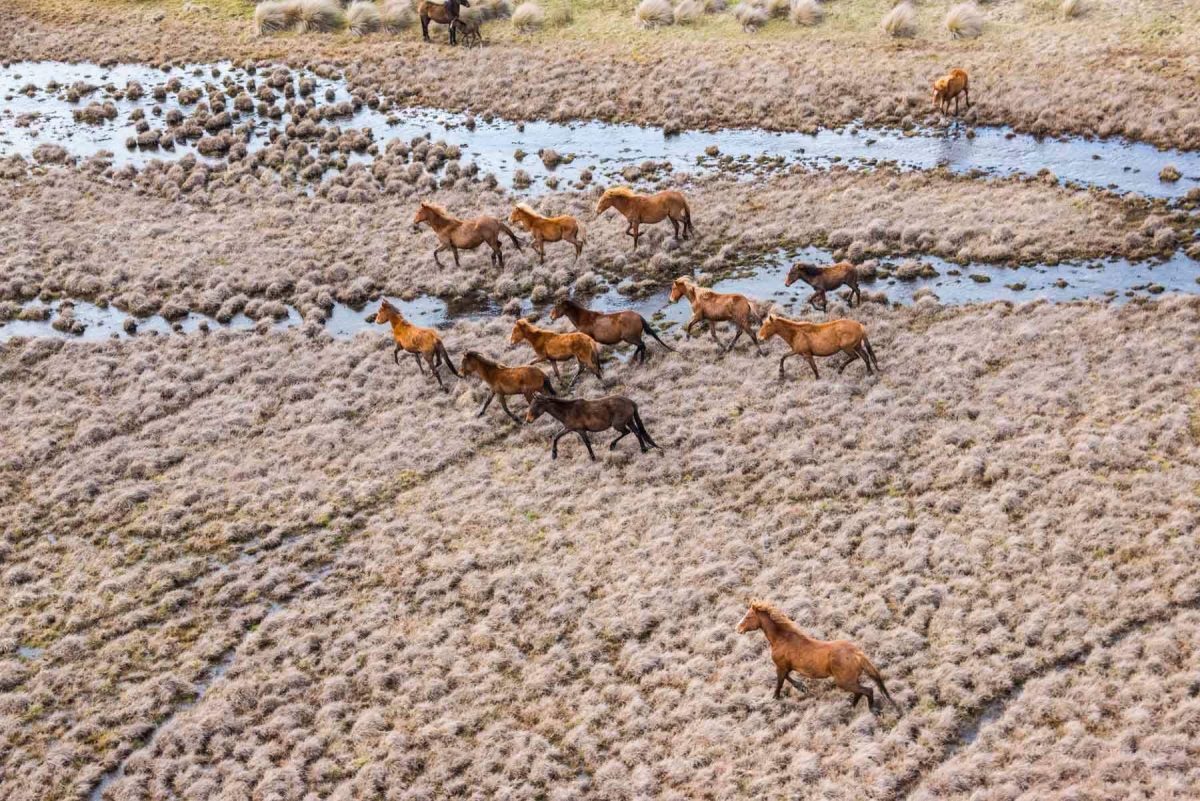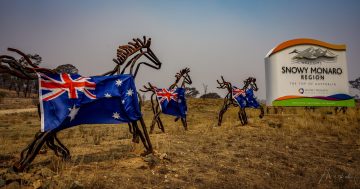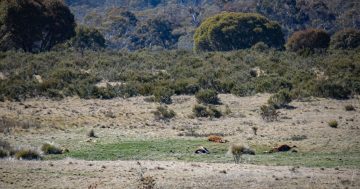
NSW Environment Minister Penny Sharp has confirmed, following trials, aerial shooting will be used as an authorised population control method in Kosciuszko National Park. Image: Invasive Species Council.
The NSW Government will now move to aerial shooting as an authorised control method for the ongoing management of wild horses in Kosciuszko National Park (KNP).
This follows yesterday’s (6 December) release of information by NSW Environment Minister Penny Sharp, including recent population survey results, an aerial shooting trial and a carcass management plan.
The management of wild horses, also known as brumbies, is governed by the 2021 Kosciuszko National Park Wild Horse Heritage Management Plan (KNP WHHMP), which requires the NSW Government to reduce the number of wild horses to 3000 within identified parts of the park by mid-2027.
Results of the October 2023 survey of the wild horse population in KNP indicate the estimated 2023 population is between 12,934 and 22,536 horses, with a best estimate of 17,432 remaining.
A November 2022 NSW National Parks and Wildlife Service (NPWS) survey estimated that 18,814 horses remained in the park or, more broadly, between 14,501 and 23,535.
This latest data indicates a reduction of 1382 wild horses over an 11-month period through bait and trapping, and ground and aerial shooting methods.
Ms Sharpe’s office said the 2023 survey incorporated improvements to the design used in 2022, including additional transect routes flown in the northern and southern survey blocks.
The 2023 survey was completed using international best practice, with a report prepared by a leading expert from the University of New England.
It has been peer reviewed by experts from the Queensland Department of Agriculture and the CSIRO is finalising a second peer review.
The NSW Government has released the report in draft format, pending the second peer review.
Ms Sharpe says the survey results indicate it will not be possible for the NSW Government to meet the mid-2027 deadline of 3000 horses under the current trajectory without aerial shooting.
The minister has also confirmed the results of an aerial shooting trial, conducted in KNP last month, where 270 horses were shot over two days with no adverse animal welfare events.
The NSW Government authorised the NPWS to undertake the short, preliminary program of aerial shooting undertaken by highly trained NPWS staff in accordance with a standard operating procedure finalised after taking into account advice from an independent veterinarian and the RSPCA NSW.
Two helicopters were deployed to conduct this operation, and an independent veterinarian was positioned in each helicopter to observe and evaluate the operation.
In addition, 43 horses were inspected by veterinarians on the ground.

Carcasses found within primary carcass areas will, where feasible, be removed within five days. Photo: Snowy Brumby Photography Adventures with Michelle and Ian.
The report of the lead independent veterinarian found there were no adverse animal welfare events, the median time from shooting to insensibility was five seconds and no horses were non-fatally wounded.
The minister said an important factor in ensuring good welfare outcomes is the NPWS standard policy of repeat shooting as standard practice – with an average of 7.5 shots being used per animal.
“This ensures the animal dies as quickly as possible and avoids non-fatal wounding,” the minister’s office said.
RSPCA NSW also observed the preliminary program and has confirmed it did not observe any departures from the standard operating procedure or any non-compliance with the Prevention of Cruelty to Animals Act 1979.
A carcass management plan, also released on 6 December, says that as a general rule carcasses will be left in situ in KNP but the NPWS has acknowledged the need for carcasses from wild horse control programs to be managed carefully and in a considered way, as to avoid potential impacts to the environment and park visitors.
Issues of risk related to carcasses include the potential impacts on waterways and groundwater (short-term and localised), the spreading of disease and the short-term increase in food availability for scavenger feral animals such as wild dogs and pigs.
The NPWS has also undertaken to relocate any carcasses, by ground or air, within the recommended five days, from identified primary carcass management areas mainly associated with waterways and recreational assets, with decisions based primarily on risk, feasibility, aesthetic and practicality considerations.
This includes any carcasses within 50 metres either side of a major waterway, 10 metres either side of a mapped minor permanent (flowing) waterway, 200 metres both sides of a major public road, 400 metres from the boundary of a picnic and campground, 40 metres from hut perimeters and 40 metres both sides of major walking tracks.
Consideration will also be given to relocating carcasses in secondary management areas such as ecological health monitoring sites, areas where significant surface waters may accumulate in the event of heavy, sustained rainfall, and other visitor areas.
Rolling closures of areas of the park will be necessary as part of staff and visitor safety mitigation. The closures will further reduce the aesthetic and recreational impacts of carcasses by permitting time for decomposition to commence.
Invasive Species Council advocacy director Jack Gough welcomed the news that wild horse numbers had been reduced in KNP.
“While the reduction is modest, it is the first time in over two decades that we have actually seen feral horse numbers in Kosciuszko National Park decline, other than in response to devastating drought or fire,” he said.
Park users planning to travel to KNP should familiarise themselves with any current NPWS local alerts.















